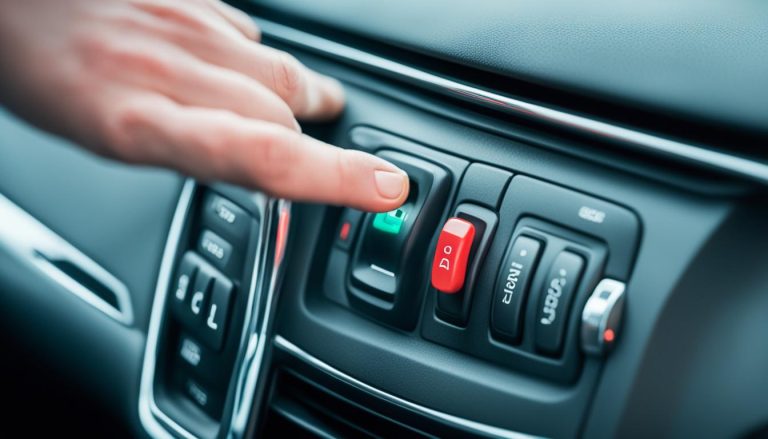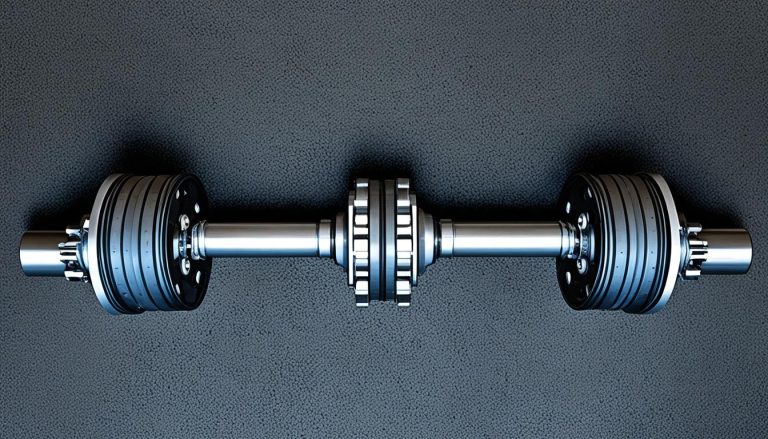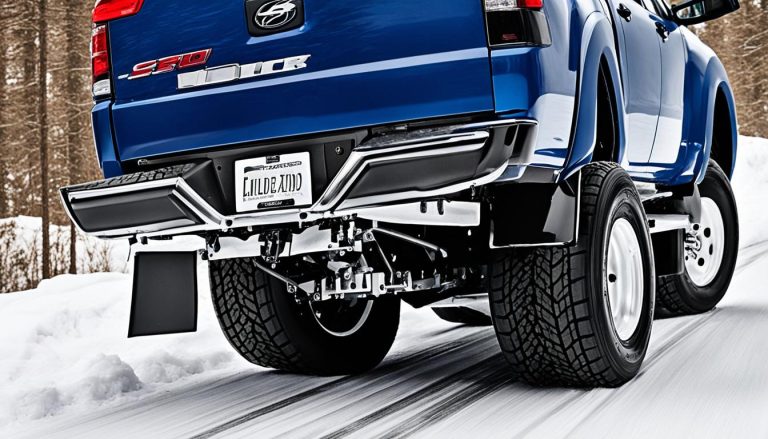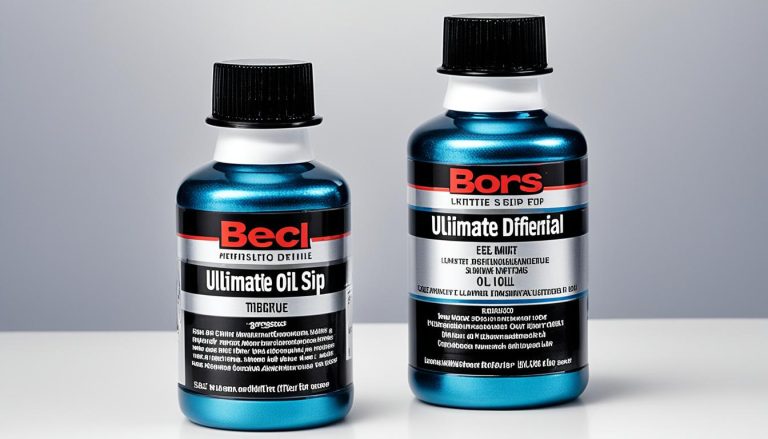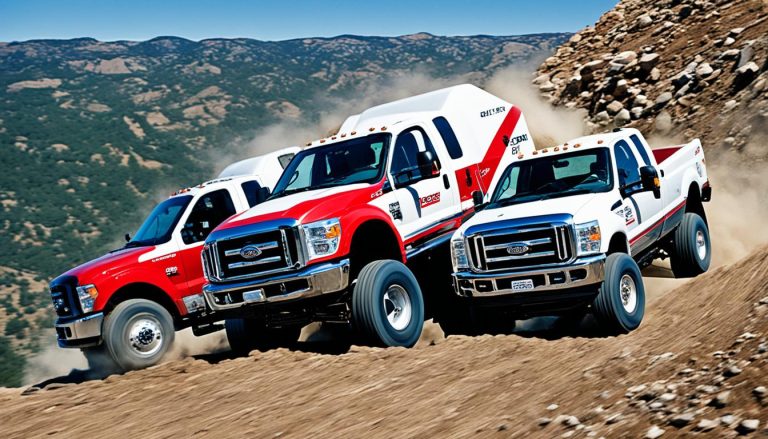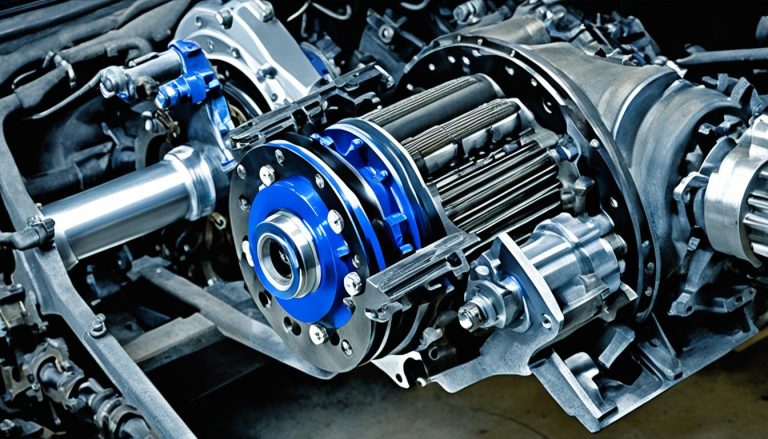Is the Rear Rubicon Locker Also a Limited Slip?
If you’ve ever traversed rocky trails or conquered steep inclines, you know the importance of reliable off-road differential technology in your Jeep Wrangler Rubicon. A common topic of discussion in the off-roading community is whether the revered rear Rubicon locker also functions as a limited slip differential (LSD). Perhaps you’re a proud owner of a ’03-’06 TJ Rubicon, sporting a robust Dana 44 axle with a 4:10 gear ratio, uncertain if your rig embodies the best of both worlds: a locker and an LSD. Let’s delve into the mechanics of your four-wheeler, and set the record straight.
Key Takeaways
- The rear Rubicon locker is a key feature for superior off-road performance.
- Factory-installed lockers in Jeep Wrangler Rubicons do not operate as limited slip differentials.
- Understanding your Jeep’s differential capabilities enriches your off-roading strategy.
- Jeep’s Brake Lock Differential system mimics some limited slip differential traits without mechanical LSD features.
- Clarification on Rubicon locker and LSD functionalities helps eliminate myths within the Jeep community.
- Knowing the difference assists in informed decisions about potential upgrades for your off-road adventures.
Understanding the Basics of the Rubicon Locker System
If you’re delving into the world of off-roading with a Jeep Wrangler Rubicon, it’s essential to understand the differences between a Rubicon locker and limited slip differential—both critical components when discussing traction and performance. The Jeep Wrangler Rubicon locker – a standout feature, distinguishes itself by providing unyielding lock-up of both wheels on an axle, ensuring maximum traction when you need it most.
What is a Rear Differential Locker?
A rear differential locker, sometimes simply called a locker, is a variant of the rear differential that can lock both wheels on an axle together as if on a common shaft. This ensures that both wheels rotate at the same speed, providing maximum traction in scenarios where one wheel may be off the ground or on a slippery surface. These characteristics make the rear differential locker a revered component in four-wheel drive lockers.
Types of Differential Lockers in Four-Wheel Drive Vehicles
There are various types of lockers used in four-wheel drive systems, which range from mechanically actuated to electrically controlled lockers. The Jeep Wrangler Rubicon locker, in particular, utilizes a selectable locker system that can be toggled on or off by the driver, depending on the driving conditions. This flexibility allows for a comfortable on-road driving experience in the unlocked state, and superior off-road capabilities when locked.
| Type | Description | Activation Method |
|---|---|---|
| Selectable Locker | Manually engaged by driver | Electronic Switch/Button |
| Automatic Locker | Engages when differential detects slip | Torque/Slip-Sensitivity |
| Limited Slip Differential | Directs torque to the wheel with the most resistance | Torque difference in wheels |
The Functionality of the Rubicon Locker in Jeep Wrangler Models
The Rubicon version of the Jeep Wrangler is well-known for its robust and dependable four-wheel drive system, which includes factory-installed lockers both at the front and rear axles. Unlike limited slip differentials, which permit some variance in wheel speed across the axle, the Jeep Wrangler Rubicon locker can fully lock the axle, forcing both wheels to rotate simultaneously regardless of the traction scenario. This ability is particularly advantageous for severe off-road conditions where losing traction on one wheel can mean the difference between getting stuck or making it through rugged terrain successfully.
Please note that while the Rubicon’s locker system is excellent for challenging terrains, it should not be confused with the limited slip differential feature, which typically offers improved traction without fully locking the wheels together.
Comparing Limited Slip Differential to Locker Systems
When discussing limited slip versus locker systems in vehicles like the Jeep Wrangler Rubicon, it’s essential to understand their distinct mechanisms and how they contribute to traction benefits and off-road capabilities. A Limited Slip Differential (LSD) smartly allocates torque between wheels, permitting differential wheel speeds which are immensely handy while taking sharp turns. On the other hand, locker systems shine in off-road conditions where their ability to lock the wheels together allows for unparalleled traction on rugged terrain.
![]()
Let’s delve deeper into the practical differences that set these systems apart, particularly in high-demand scenarios such as rock crawling or navigating slippery surfaces:
| Feature | Limited Slip Differential | Locker System |
|---|---|---|
| Operation | Distributes torque to both wheels but allows for variance when needed | Locks both wheels together to rotate at the same speed |
| Best Use Scenario | Road driving and mild off-road conditions where traction and maneuverability are needed | Extreme off-road situations where maximum traction is essential |
| Vehicle Control | Enhanced stability and control on turns | Can be challenging on regular roads but provides superior grip off-road |
| Engagement | Automatic based on torque imbalance | Driver-selected (in the case of selectable lockers) |
| Examples | Torsen, Quaife | Electronic (e-lockers), Air (ARB), Cable-operated |
Whichever system you lean towards, remember that your choice should reflect your vehicle’s primary use. If you spend a lot of time crawling rocks and tackling steep, muddy inclines, you’ll appreciate the Jeep Wrangler Rubicon’s locker system. On the contrary, if your adventures are a mix of on-road drives with occasional forays into the wild, an LSD might serve you better. It’s all about matching your gear to your usual terrain to make every journey both safe and exhilarating.
Is the Rear Rubicon Locker Also a Limited Slip?
As an off-road enthusiast, you’re likely aware of the significance of your Jeep Wrangler’s differential technology for tackling challenging terrain. In particular, the Rubicon locker functionality is a focal point for those looking to conquer the great outdoors. But you may wonder, does this specialized hardware double as a limited slip differential (LSD)? Let’s delve into the mechanics of the Rubicon’s differential capabilities to clear the air.
Factory Settings of Rubicon Locker and Limited Slip Differential
The Jeep Wrangler’s Rubicon model is designed with robust off-road differential lockers, setting a high bar for off-road performance. At the factory level, the Rubicon’s lockers are distinctly different from a conventional LSD. When the locker is disengaged, it behaves as an open differential, allowing each wheel to rotate independently—ideal for everyday driving situations. However, when engaged, the locker binds the axle shafts together, ensuring both wheels turn at the same rate for maximum traction off-road.
![]()
Can Rubicon Lockers Function as Limited Slip When Not Locked?
The short answer is no. Rubicon models do not feature a traditional LSD within their drivetrain system when their locker is inactive. The often misunderstood Brake Lock Differential (BLD) system, while innovative, cannot replicate the mechanical benefits of an LSD, as it relies on the vehicle’s braking system to manage wheel spin, rather than providing continuous, mechanical traction.
However, this doesn’t mean your Rubicon is left without tricks up its sleeve. The Traction Control System is there to aid in reducing wheel slip by intelligently applying brakes to the wheel that’s losing grip, therefore transferring power to the wheel with traction—an ingenious workaround that helps maintain forward momentum when the lockers are not engaged.
In conclusion, the Rubicon’s legendary off-road capabilities are a product of its well-engineered differential lockers. Though not an LSD by traditional standards, your Jeep is equipped with a foolproof system designed to tackle the rigors of off-road adventures with uncompromised mastery.
Enhancing Off-Road Capabilities with Differential Technology
When it comes to enhancing your off-road experience, the type of differential technology equipped on your rig can make a substantial difference. Understanding how differential lockers can boost your vehicle’s performance is key to mastering challenging terrains.
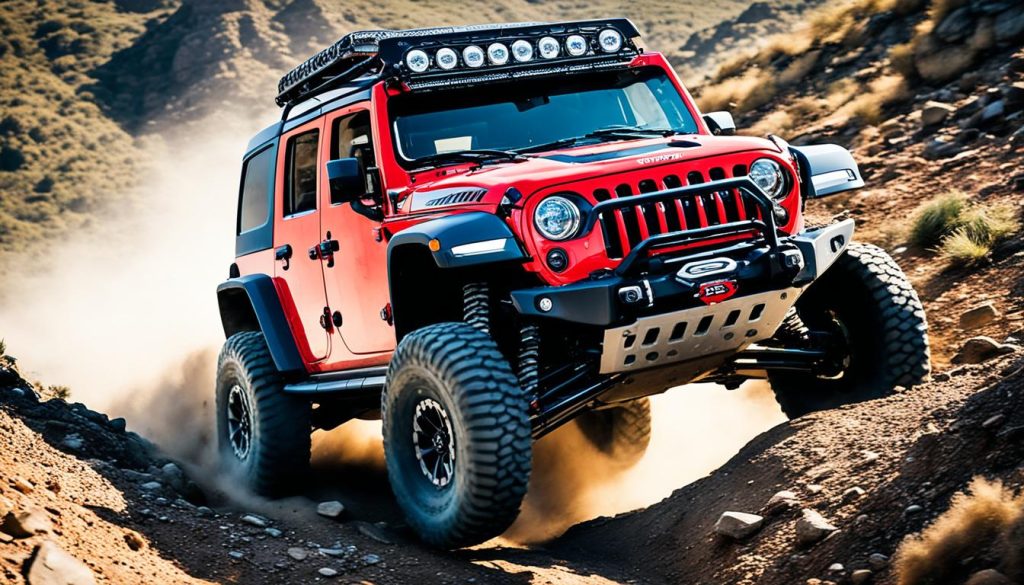
The Role of Lockers in Off-Road Maneuvering
A differential locker is a game-changer in the off-roading world, providing undeniable differential locker benefits where it counts. By locking the axles together, they ensure that both wheels receive equal amounts of torque, regardless of traction discrepancies. This translates to unparalleled performance in situations where grip variations might otherwise leave you stranded.
Choosing Between Limited Slip Differentials and Lockers for Off-Road Use
The debate of limited slip vs locker for off-roading largely depends on the terrain to be conquered. Whether you find yourself on slick rock, in deep mud, or navigating loose gravel, the right differential setup can facilitate your adventure or hold you back.
| Terrain Type | Limited Slip Differential | Locker |
|---|---|---|
| Mud | Good traction aid, can struggle with deep ruts | Best traction, ensuring both wheels drive you forward |
| Rock Crawling | May provide uneven power delivery | Solid choice for even power, a must-have for serious crawlers |
| Sand | Useful for mild patches, but can bog down in deep sand | Ensures maximum push when floating over dunes |
| Snow/Ice | Helps reduce wheel spin, though not as robust | Optimal for maintaining drive in slick conditions |
| Rocky Trails | Performs well if not overly technical | Provides consistent traction over uneven surfaces |
Equipping your vehicle with the appropriate differential technology is more than a preference; it’s about tailoring your ride to the adventures you pursue. Whether you opt for the smooth operation of a limited-slip differential or the uncompromising grip of a locker, each choice profoundly influences your off-road experience. Consider your usual trails, the level of challenge you seek, and the desired control to determine the best fit for your off-roading needs.
Traction Control Systems and Differential Lockers: How They Work Together
As a Jeep Wrangler enthusiast, you’re likely familiar with the challenges of navigating treacherous terrain. Rubicon models are engineered with advanced systems designed to maximize traction and maintain stability under tough conditions. Exploring how Jeep Wrangler traction control integration and differential lockers operate in unison helps you better appreciate the sophisticated mechanics beneath your vehicle’s rugged exterior.
Integration of Brake Lock Differential (BLD) System
The Brake Lock Differential (BLD) system is a pivotal component in your Rubicon’s traction control arsenal. Working as part of the broader Traction Control System, BLD activates when it detects wheel slip. By deliberately applying brake pressure to the slipping wheel, it effectively redirects torque to the wheel with the most grip. This action is immediate and sensitive, responding to the split-second changes in your off-road journey. The benefit of the BLD system is twofold: not only does it enhance your control across uneven or slick surfaces, but it also bolsters your confidence when facing the unpredictable off-road elements.
Electronic Stability and Traction in Rubicon Models
Your Jeep’s electronic stability comes into play particularly when you’re on icy expanses or rain-slicked trails. Keeping the Rubicon composed, especially through sharp turns, is where the electronic stability feature demonstrates its mettle, reducing the risk of skids or loss of control. For off-roading ventures, this electronic stability, coupled with the BLD system, showcases the full extent of the benefits associated with such innovative technology. Despite these advances, however, some drivers may opt for aftermarket additions, such as LSDs, to limit brake wear over time. Yet, whether on wild backwoods paths or less challenging terrain, your Rubicon’s adept combination of electronic stability and BLD system benefits ensures a steadfast and controlled off-roading experience.
FAQ
Is the Rear Rubicon Locker Also a Limited Slip?
No, the rear Rubicon locker is not also a limited-slip differential (LSD). It is a selectable locker that provides an open differential when not engaged, and a fully locked differential when engaged.
What is a Rear Differential Locker?
A rear differential locker is a feature in four-wheel drive vehicles that can lock both wheels on an axle together, forcing them to turn in unison for improved traction. This is particularly beneficial in off-road conditions.
What are the Types of Differential Lockers in Four-Wheel Drive Vehicles?
Four-wheel drive vehicles can be equipped with various types of differential lockers including electronic, cable, or air-actuated selectable lockers, and automatic lockers like the Detroit locker.
How Does the Rubicon Locker Function in Jeep Wrangler Models?
The Rubicon locker in Jeep Wrangler models functions as an open differential when not engaged, allowing for normal driving conditions. When engaged, it locks the wheels on the axle together, distributing torque evenly to both wheels for maximum traction off-road.
How Does a Limited Slip Differential Compare to a Locker System?
A limited slip differential (LSD) allows for some differentiation in wheel speed while still providing torque to both wheels, which is good for on-road and mild off-road conditions. A locker system locks both wheels on an axle, delivering equal torque and is better suited for more extreme off-road scenarios.
What are the Factory Settings of the Rubicon Locker and Limited Slip Differential?
From the factory, Jeep Wrangler Rubicon models come with selectable lockers in both the front and rear. There is no limited slip differential present in factory settings for Rubicons.
Can Rubicon Lockers Function as Limited Slip When Not Locked?
Rubicon lockers do not function as a limited slip when not locked. Instead, they operate as an open differential. However, the Brake Lock Differential (BLD) system can mimic some functions of an LSD by applying brakes to the spinning wheel.
What is the Role of Lockers in Off-Road Maneuvering?
Lockers are crucial in off-road maneuvering; they provide maximum traction by locking the wheels on an axle together, which is especially useful when traversing over obstacles or in tricky terrain.
How Do You Choose Between Limited Slip Differentials and Lockers for Off-Road Use?
The choice between limited slip differentials and lockers for off-road use depends on the terrain and desired control level. For extreme off-road challenges, lockers are the better choice, whereas LSDs are sufficient for mild off-road conditions and offer better drivability on-road.
How Do the Traction Control Systems and Differential Lockers Work Together?
Traction Control Systems, such as the Brake Lock Differential (BLD), work by applying brakes to spinning wheels, thereby transferring torque to the wheels with more grip. They provide a traction aid that complements the function of differential lockers, which directly lock the wheels for improved traction.
What is the Integration of the Brake Lock Differential (BLD) System?
The BLD system is integrated into the traction control system of Jeep Wranglers, applying brakes to the wheel that is losing traction, effectively transferring torque to the wheel with more grip.
How Do Electronic Stability and Traction Work in Rubicon Models?
Electronic stability control helps maintain vehicle control during extreme maneuvers or on slippery surfaces, while the traction control system, including the BLD, helps provide traction by applying brakes to wheels that may be slipping, therefore enhancing stability and safety.

